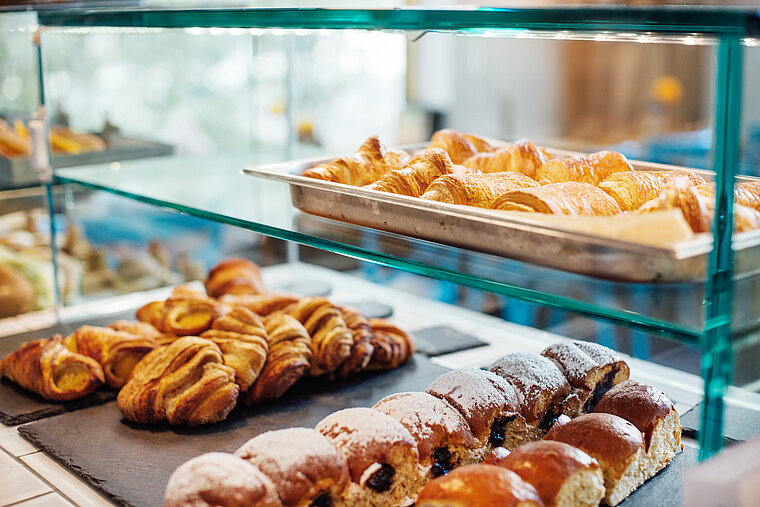Why having leftover food at the end of the day is bad for your business

Leftover food at the end of the day is a common occurrence in many bakeries and cafes. It is common practice for stores to place extra orders to avoid the dreaded sell-out situation. After all, to a bakery or cafe: the idea of losing out on potential sales because of under-ordering hits harder than having a few leftover sandwiches at the end of the day. For them, having a few leftover sandwiches can easily be written off. They can be eaten by staff at the end of the day, be sold at a discount, or, to take the easy way out: be chucked into a bin.
When asked about their top concerns, bakeries and cafes rarely cite food waste as an independent, pressing issue. If food waste as a concern is cited, it’s often tagged onto concerns related to costs or selling out. Food waste alone is generally not top of mind for business owners as a big issue. For this reason, food waste is actually a bigger issue than most business owners believe it to be. When food waste goes unaddressed for some time, a snowball effect of problems arise — quietly at first, only to eat away at a bigger chunk of a business as time passes.
Here are a few main problems we’ve pinpointed as to why having leftover food at the end of the day is bad for business:
Sunken costs
Higher costs might be a more “popular” problem amongst store owners in food retail stores with prep-ahead models (think cafes, bakeries, salad bars, etc.). We get it. For a business, your profitability is your number one priority. And so it should be! We’re just here to let you know that the challenges you experience in your store aren’t necessarily mutually exclusive. That is, the challenges you’ve identified whilst running your store like staffing issues, rising costs, or consistent food waste are often times related by correlation (if not by causation).
When breaking down your store costs, you may find that the wasted food you generate is a big culprit behind your costs incurred. Looking purely from a monetary perspective, the unsold, leftover food sitting at the counter at the end of the day represents the lost sales from the unsold food and the lost costs from ordering or producing the food. To combat food waste, businesses sometimes go with either of two models:
- When approaching closing, stores may set up a discounted price for any remaining unsold food.
- Resell leftover food on a third-party app at a much lower price (think TooGoodtoGo)
Upon further examination of the above methods, neither of them can fully recover the costs incurred to produce and sell the food at full price.
Looking beyond monetary costs at face value, the leftover food at the end of day also presents hidden costs that are left unaccounted for in a business. Take labour costs, the extra hours the baker would have had to clock in to bake the pastries (where a number of those were actually part of the overproduction and left unsold) counts as extra costs to a business. To get a better understanding of hidden costs that come with food waste, read this blog post we wrote a few weeks back.
Store reputation?
In the age of green consumerism, consumers are becoming more and more attuned to the importance of reducing emissions when they spend money (think airline companies charging extra for passengers to climate compensate their flights). Stores can no longer get away with dishing out plastic straws without confused consumers taking a second look (plastic?! Is that still a thing?). The same applies for excessive food waste.
When stores make an effort to demonstrate that they take steps to reduce their food waste (and therefore carbon footprint), consumers are more likely to see the brand in a positive light. It’s not such an easy feat though: sustainability can still be a difficult fine line to walk on for brands. Consumers are increasingly aware of the practice of greenwashing, and are highly likely to be aware of the gap between a brand’s stated green goals and implementation (or lack thereof). Customer satisfaction also tends to fall as the number of stated goals outweigh the number of actions taken.
What does this mean? Essentially, the way forward for your stores when it comes to taking green initiatives is to be upfront, transparent, and genuine about the actions you intend on taking to create a greener store. Instead of attempting to make big league moves and failing to do so, think about taking baby steps when it comes to making your store more sustainable and waste-free. Simply by signalling that your store is taking an extra step to reduce or even eliminate the level of food waste produced in-store can be a big step forward for your store’s greener reputation.
Savvie’s customers, for example, can choose to display in their store that they use Savvie to avoid over-production. Even a small gesture such as placing a sticker to acknowledge the store is aware of the industry’s practice of overproduction can help a brand gain positive connotations amongst consumers.
Savvie’s customers use stickers to draw attention to their environmental consciousness and efforts
>>> See how Savvie helps bakeries and cafes reduce food waste whilst boosting profitability




